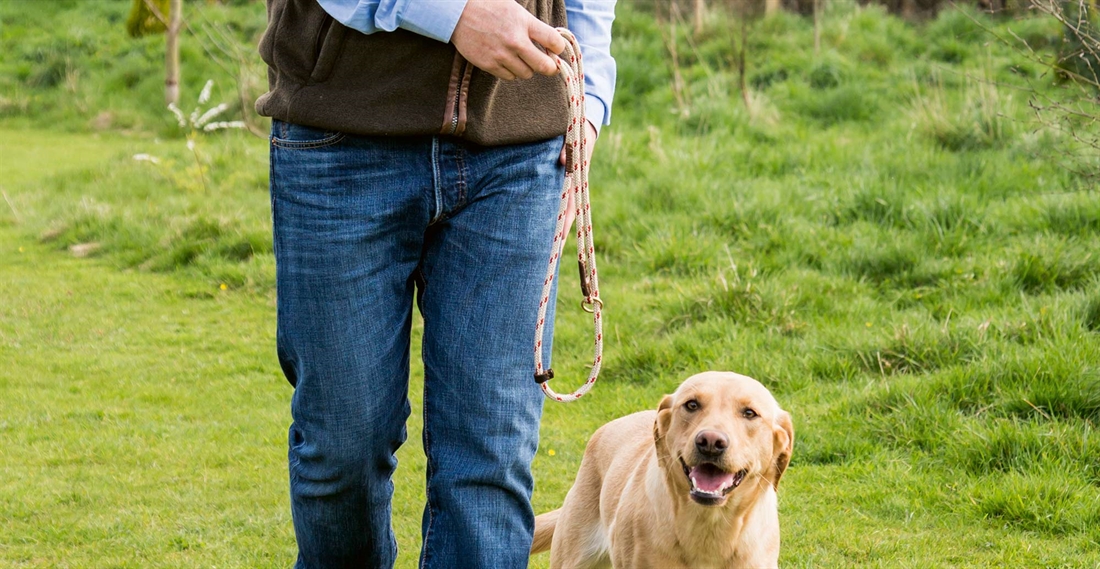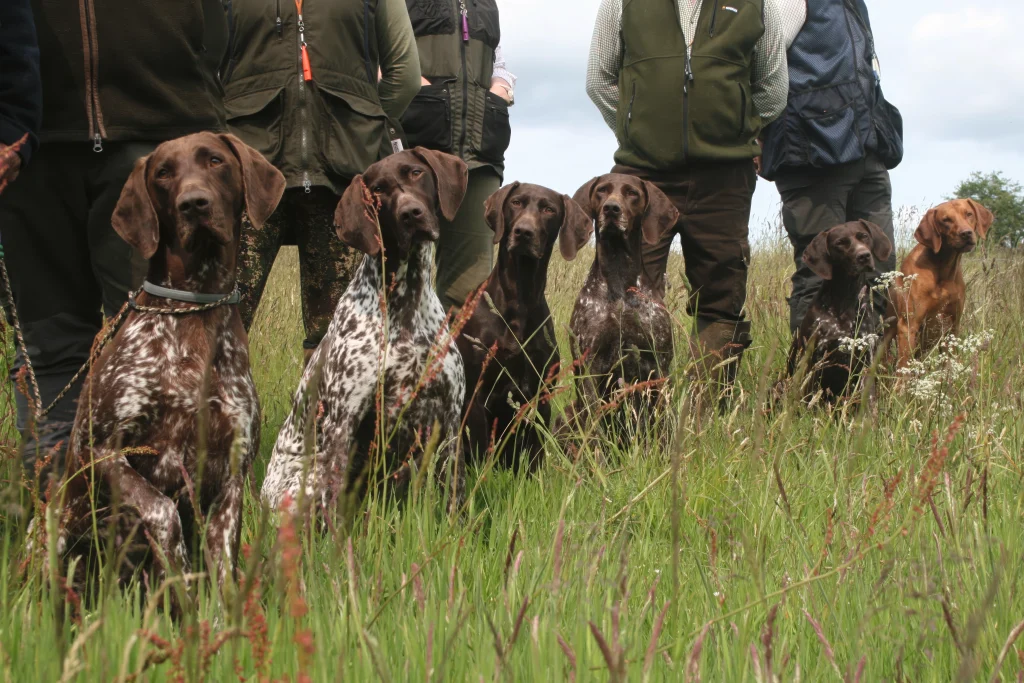Questions from the dog training paddock
Gundog Journal speaks to three professionals to answer your questions about training your gundog.

Q: My One-Year-Old Lab Walks Slightly In Front Of Me When I’m Trying To Get Her To Walk To Heel. How Can I Get Her To Stay Behind Me?
Jayne Coley: It’s a waste of time nagging her by constantly pulling her on the lead. You will have to re-train her by going back to the beginning of dog training, teaching her to walk to heel with you.
On a slack lead, walk a few steps to start with, very slowly, keeping her focused on you with her head level with your leg. Sit her up. Praise. Repeat. You must concentrate on her, keeping her focused on you. Treats can be useful in the early stages to achieve this. You cannot rush making progress.
Ideally, do two or three sessions a day of no more than five minutes each so she does not get bored. Make the sessions fun and interesting by walking at different speeds, changing direction, mainly to the left so you are walking around her. Every time you put the lead on, she must walk to heel correctly, and this takes time to learn (or re-learn).
If someone else walks her during the day, you are going to have to teach them to do the same. It is going to take a lot of patience, perseverance and consistency on your part, so always ensure you give yourself the time to do it properly.
When this doesn’t happen, it sends mixed messages to your dog and they won’t know what is expected of them when walking on the lead. Consistency is key here, and ensuring your dog knows what’s expected of them on every walk will help make this part of their dog training smoother and simpler.
Q: Is The Stop Whistle The Key To Dog Training As People Say?
Laura Hill: The main purpose of any gundog is gamefinding, either hunting for game to be shot or retrieving injured or dead quarry. This should be done quickly and efficiently. Natural ability is of primary importance, but we also need to be able to control our dog in the area.
Q: Is the stop whistle the key to training as people say?
Laura Hill: The main purpose of any gundog is gamefinding, either hunting for game to be shot or retrieving injured or dead quarry. This should be done quickly and efficiently. Natural ability is of primary importance, but we also need to be able to control our dog in the area.
At the end of the shooting season, it’s not unusual for the stop whistle to have become somewhat less effective. Spring is a great time to revisit the basics of dog training, including close control work.
I like to teach the stop whistle in a positive way, so that it comes to mean “Stop; look at me; something great is about to happen,” rather than the dog seeing the whistle as an unwanted or unnecessary intrusion, preventing it from doing what it wanted.
Much like people, we’re less enthused about doing something we don’t want, so being able to put a positive spin on things will help keep their attention. With this simple change of attitude, you can make your dog eager to find out what’s going to happen next, and what they should do as a part of it, rather than an order they don’t want to do or find to be negative.
If you preface your directional commands or hunting with the stop whistle, your dog will soon be looking at you in keen anticipation to find out what he’ll be doing next. Be consistent with your approach and the dog will know what to expect, rather than being confused – much like during their early dog training.
Q: How Can I Train My Eight-Month-Old Spaniel To Sit And Wait When I Walk On?
Jeremy Organ: Sitting whilst you walk off from a puppy is always difficult for any puppy as they don’t want to be left behind. Until now, all the dog training has been about recall and staying close and now we are completely contradicting ourselves in their eyes.
One way you can gain good results is by sitting the puppy in front of you whilst still on a lead. Step back from the puppy to the length of the lead (holding the lead in an outstretched arm) and slowly, step-by-step, move to one side creating a semicircle in front of the puppy, always reassuring and reminding it with a soft sit command and by putting your hand up in the air.
Once you have been able to move left and right in front of the puppy without it wanting to creep in then try the same exercise with no lead. If this is successful then gradually gain more distance from the puppy but still not doing any more than a semicircle. Repeat several times throughout the week until you are able to gain 10m or so from the puppy. When the puppy has accepted this, try to complete the circle but at close range to start with.
If at any time the puppy creeps into you, put it back where it was and calmly ask it to sit and start all over again.
As with any part of dog training, be consistent and emphasise the positives. Every success – even if you can only manage one or two steps at first – should be praised. This is a confusing change, so don’t get annoyed or exasperated. Your dog is trying and you need to be patient and encouraging to get the best results.
Learn More About Dog Training
Dog training covers a lot of areas and specialisms, and knowing where to begin can be confusing. There are a lot of experts and plenty of advice to help, as well as professionals that can help, but many gundog owners want to train their dogs themselves.
If you want to know more about dog training, what you should do and what kind of results you should look for, then get in touch with the Gundog Journal team and we’ll do our best to help point you in the right direction. If enough people ask the same questions, we can speak to more experts and bring you more advice.
Related Articles
Get the latest news delivered direct to your door
Subscribe to Gundog Journal
Unlock the full potential of your working dog with a subscription to Gundog Journal, the UK’s only dedicated magazine for gundog enthusiasts. Published bi-monthly, this authoritative resource delivers expert training advice, in-depth interviews with top trainers and veterinary guidance to help you nurture a stronger bond with your dog.
With stunning photography and thought-provoking content, Gundog Journal is your essential guide to understanding, training and celebrating your working dog.
Save 10% on shop price when you subscribe, with a choice of packages that work for you. Choose from Print & Digital or Digital only with each journal delivered directly to your door or via the app every other month, plus access to past issues with the digital back issue library.







